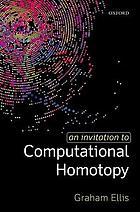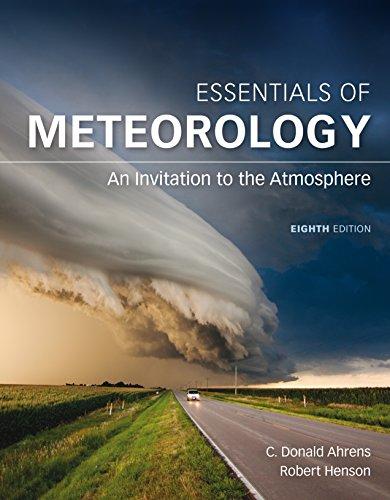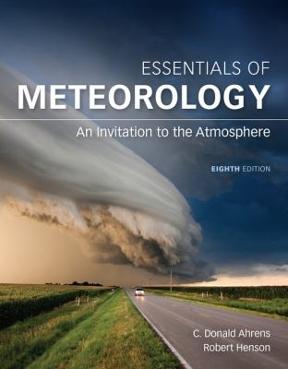3
Oxford University Press is a department of the University of Oxford. It furthers the University’s objective of excellence in research, scholarship, and education by publishing worldwide. Oxford is a registered trade mark of Oxford University Press in the UK and certain other countries.
Published in the United States of America by Oxford University Press 198 Madison Avenue, New York, NY 10016, United States of America.
© Oxford University Press 2019
All rights reserved. No part of this publication may be reproduced, stored in a retrieval system, or transmitted, in any form or by any means, without the prior permission in writing of Oxford University Press, or as expressly permitted by law, by license, or under terms agreed with the appropriate reproduction rights organization. Inquiries concerning reproduction outside the scope of the above should be sent to the Rights Department, Oxford University Press, at the address above.
You must not circulate this work in any other form and you must impose this same condition on any acquirer.
Library of Congress Cataloging-in-Publication Data
Names: Lindemann, Hilde, author.
Title: An invitation to feminist ethics / Hilde Lindemann. Description: 2nd Edition. | New York : Oxford University Press, 2019. | Includes bibliographical references and index.
Identifiers: LCCN 2018058775 (print) | LCCN 2019006431 (ebook) | ISBN 9780190059347 (Online content) | ISBN 9780190059323 (updf) | ISBN 9780190059330 (epub) | ISBN 9780190059316 (pbk. : alk. paper)
Subjects: LCSH: Feminist ethics. | Feminism—Moral and ethical aspects. Classification: LCC BJ1395 (ebook) | LCC BJ1395 .L56 2019 (print) | DDC 170.82—dc23
LC record available at https://lccn.loc.gov/2018058775
1 3 5 7 9 8 6 4 2
Printed by Sheridan Books, Inc., United States of America
This book is for Ellen and Jack, pieces of my heart
Preface
Three themes came together in feminist work in the late 1970s and early 1980s to give rise to the term “feminist ethics.” One theme was that of feminist attention to contemporary ethical issues, such as equality of opportunity, war, and rape. Another was that of uncovering sexist biases in the traditional ethical theories. And the third was that of the differences other than gender—such as race, class, sexual orientation, ability, and ethnicity—that can bring different perspectives to bear on ethics. Since then, a rapidly burgeoning literature in feminist ethics has not only enlarged on these three themes but also added a fourth: the development of feminist moral theories.
The majority of textbooks in philosophy don’t contain very much of this work, although there are a few exceptions. To be sure, the standard texts include a handful of articles by women philosophers, but typically not philosophers—whether women or men—who cite the feminist literature and use feminist methodologies. When the work of feminists does find its way into these volumes, it’s likely only to aim at issues of female plumbing (childbirth, egg donation, abortion), or caregiving, as if feminist ethics were essentially about what goes on in the women’s hut, away from the rest of the village.
It’s hard to say why this is so. In other areas of the humanities, feminist analysis and criticism is reasonably well integrated into the scholarly conversation. Textbooks in literary criticism, for example, include feminist work as a matter of course. The same is true in history, theatre studies, religious studies, and the social sciences. For the most part, though, philosophers have only just begun to pay attention to gender, race, and other abusive power systems, as they begin to realize that ignoring these matters distorts philosophical inquiry.
An Invitation to Feminist Ethics is an attempt to encourage further conversation. It’s meant to support the efforts of philosophers
who may not know much about feminist ethics but want to learn. Its primary audience, though, is undergraduates, both those who have had some exposure to philosophical ethics and those who haven’t. It’s designed to be small enough to serve as a supplement to the usual introductory textbook, but it can also function as a stand-alone text in courses in feminist ethics, feminist philosophy, women’s studies, bioethics, and the like.
The book is divided into two parts. The first part, “Overviews,” begins by describing feminist ethics in broad strokes, saying something about what it isn’t, as well as explaining what it is. Since feminist ethics is the attempt to understand, criticize, and correct our moral beliefs and practices, using gender as a central category of analysis, Chapter 1 introduces the concept of gender, as well as drawing contrasts between feminist and nonfeminist ways of doing ethics. In Chapter 2 I offer a survey of the feminist ethicist’s toolkit—the set of essential concepts that feminists use to do their work. Crucial among these are the concepts of gender neutrality, androcentrism, difference, and oppression, all of which I put to work on a discussion of affirmative action. Chapter 3 adds another tool: intersectionality. I explain what it is and how it works, and then take a stab at figuring out what makes it so hard to deal with.
Chapter 4 looks at how personal identities operate—how they’re conferred, how we “do” them, how they set up socially (and sometimes morally) normative expectations for the way some sorts of people are supposed to behave and how other sorts of people may treat them. Identities are of special concern to feminist ethics, I argue, because they interact with abusive power systems to establish who gets to do what to whom.
Chapter 5 is an overview of the impartial, impersonal, universalistic, hyperrational moral theories that have dominated ethics in English-speaking countries for the last two centuries. The overview is followed by feminist criticisms of the approach to morality that’s presupposed by these theories. Chapter 6 is a survey of feminist moral theories. Although there are many of these, I confine myself to two sorts of theories: the ethics of care and what might loosely be called an ethics of responsibility.
The second part of the book, “Close-ups,” zooms in on three topics of particular concern to feminist ethicists. Chapter 7 offers a head shot of bioethics through a feminist lens, because bioethics is the most popular ethical discourse—the one that seems to matter to people in all walks of life—so it’s useful to see what feminists do with it. Chapter 8 offers a close look at how feminist philosophers think about violence, because violence, when it’s gendered, directly harms women. That’s why the chapter focuses on rape, the #MeToo movement, rape as a weapon of war, and domestic violence. And the final chapter looks carefully at ethical issues arising from the globalized economy, because here again gender plays a strong role. Not only does globalization join forces with gender to intensify the oppression of women in debtor nations, but “women’s work” has itself become globalized, often with disastrous consequences. The chapter—and the close-ups—closes with a discussion of how cross-cultural judgments can be made in an unconfused, feminist, nonarrogant manner.
What Is Feminist Ethics?
A few years ago, a dentist in Ohio was convicted of having sex with his female patients while they were under anesthesia. I haven’t been able to discover whether he had to pay a fine or go to jail, but I do remember that the judge ordered him to take a course in ethics. And I recall thinking how odd that order was. Let’s suppose, as the judge apparently did, that the dentist really and truly didn’t know it was wrong to have sex with his anesthetized patients (this’ll stretch your imagination, but give it a shot). Can we expect—again, as the judge apparently did—that on completing the ethics course, the dentist would be a better, finer man?
Hardly. If studying ethics could make you good, then those of us with PhDs in moral philosophy would be absolute saints. I can’t speak for all of us, of course, but though my colleagues are decent enough, they’re no more moral than anyone else. Ethics doesn’t improve your character. Its subject is morality, but its relationship to morality is that of a scholarly study to the thing being studied. In that respect, the relationship is a little like the relationship between grammar and language. Let’s explore that analogy. People who are linguistically competent in English don’t have to stop and think about the correctness of the sentence “Bellatrix gave it to him.” But here’s a harder one. Should you say, “Bellatrix gave it to him who must not be named” or “Bellatrix gave it to he who must not be named”? To sort this out, it helps to know a little grammar: the systematic, scholarly description of the structure of the language and the rules for speaking and writing it. According to those rules, the object of the preposition “to” is the entire clause that comes after it, and the subject of that clause is “he.” So, even if it sounds peculiar to you, the correct answer is, “Bellatrix gave it to he who must not be named.”
In a roughly similar vein, morally competent adults don’t have to stop to think about whether it’s wrong to have sex with one’s anesthetized patients. But if you want to understand whether it’s wrong to have large signs in bars telling pregnant women not to drink, or to sort out the conditions under which an act is rape, it helps to know a little ethics. The analogy between grammar and ethics isn’t exact, of course. For one thing, there’s probably more agreement about what’s linguistically correct than about what’s morally correct. For another, grammarians are concerned only with the structure of language, not with the meaning or usage of particular words. In both cases, though, the same point can be made: You already have to know quite a lot about how to behave, either linguistically or morally, before there’s much point in studying either grammar or ethics.
1.1. What Is Ethics?
Ethics is the scholarly study of morality. It sets out to understand and justify people’s moral beliefs and the forms of life in which those beliefs are practiced. And it also criticizes and corrects those beliefs and practices. As an academic discipline, it can be divided into three branches. The first branch is metaethics, the study of what morality is. To engage in metaethics is to ask questions like these: What do moral terms mean? Where do moral values come from? Do moral judgments consist of statements that must be either true or false, or are they more like applause or an expression of disgust? If moral judgments are true or false, are they true just for me? For my society? For everybody? Or false because there’s no such thing as morality? Do we have to do what the moral rules tell us to because they’re commanded by God? Because we’ve all tacitly agreed to? Because, paradoxically, it’s only by putting ourselves under the law that we can be free?
The second branch is normative ethics, the study of moral theories and concepts. The task of normative ethics is to set out and critically examine the norms, or standards, that we can use both to guide and to evaluate our actions. Here we find moral theories such as the ethics of care, social contract theory, utilitarianism, Kantian
ethics, and virtue ethics. We also find accounts of integrity, oppression, justice, evil, and so on. You’re doing normative ethics when you try to determine what duties you have to your parents or children, or whether you should forgive somebody who isn’t sorry for having mistreated you. Figuring out the moral difference (if there is one) between making something happen and simply letting it happen is also an exercise in normative ethics.
The third branch of ethics is practical ethics, the study of ethical issues that arise within specific social practices. You will often hear this called applied ethics, because on one popular picture of morality (which I don’t buy) ethics at this level is a matter of taking the principles that you’ve logically deduced from your moral theory at the normative level and applying them to a concrete case. For reasons I’ll explain later, this picture of morality seems all wrong to me, so rather than talk about applications, I’ll describe this branch as the most practical of the three. Examples of practical ethics are legal ethics, medical ethics, the ethics of journalism, and business ethics, all of which set out to regulate the behavior of the people working in those fields. Environmental ethics and bioethics—the study of ethical issues arising from the rapid advances in biomedicine—belong to this branch as well. Here’s where you’d work out the moral implications of professors’ dating their students. And it’s here where the debates over abortion, academic freedom, climate change, and physician-assisted suicide take place.
For your convenience, I’ve made a sketch map of some of the territory that’s covered by ethics. It’s incomplete, of course, and you probably won’t be familiar with all the terms on the map, but don’t worry about that for now. You’ll pick up the ones you need as we go along.
Ethics Sketch Map
METAETHICS
Metaphysical Theories (theories of the basic nature of morality)
Noncognitivism (e.g., emotivism): moral judgments aren’t true or false
Cognitivism: moral judgments are true or false
Subjectivism: it’s true for me
Relativism: it’s true for some specific group of us
Objectivism: it’s true because of something independent of us
Monism: all moral values are commensurable; there can be no genuine moral dilemmas
Pluralism: moral values are plural and therefore can conflict in actual cases
Error theory: all moral propositions are false
Moral Epistemologies (theories of moral knowledge)
Foundationalism: moral truths rest on some fundamental moral claim (e.g., the good for humans, the permission principle)
Coherentism: moral beliefs are true or acceptable if they are consistent with one another
Moral particularism: what counts as a moral reason in one context may not count as a reason in another
Skepticism: doubts whether there is moral knowledge
Naturalized moral epistemology: assumes that moral knowledge arises out of and is corrected by our experience of the world
NORMATIVE ETHICS
Theories
Ethics of care
Kantian ethics
Social contract theory
Utilitarianism
Virtue theory
Accounts of Integrity
Oppression
Justice
Evil
Human good
PRACTICAL ETHICS
Professional ethics (law, medicine, architecture, journalism, etc.)
Business ethics
Environmental ethics
Bioethics
You’ll notice that the word feminist appears nowhere on this sketch map. The reason is that feminist ethics isn’t a branch of ethics—it’s a way of doing ethics. Feminist ethicists work in all three branches. Annette Baier, for example, has written a book called Moral Prejudices in which she develops the idea of trust as a moral emotion. That’s a book in metaethics, because it argues for a naturalized moral epistemology. In Justice and the Politics of Difference, Iris Marion Young explains why social justice requires explicitly acknowledging and attending to the differences among social groups that bestow privilege on some and keep others powerless. That’s a book in normative ethics, because it gives an account of the concept of justice. In Disability Bioethics, Jackie Leach Scully considers the complex ethical questions surrounding impairment as a set of social practices, as experienced embodiment, as an emancipatory movement, and as a biomedical condition. That’s a book in practical ethics, because it concerns a specific moral problem. These authors are all ethicists, and they do what ethicists do. But they do it in a feminist way.
1.2. What Is Feminism?
What, then, is feminism? As a social and political movement with a long, intermittent history, feminism has repeatedly come into public awareness, generated change, and then disappeared again. As an eclectic body of theory, feminism entered colleges and universities in the early 1970s as a part of the women’s studies movement, contributing to scholarship in every academic discipline, though probably most heavily in the arts, social sciences, literature, and the humanities in general. Feminist ethics is a part of the body of theory that is being developed primarily in colleges and universities.
Many people think of feminism as a movement that aims to make women the social equals of men, and this impression has been reinforced over the decades by references to feminism and feminists in the newspapers, on social media and television, and in the movies. But bell hooks has pointed out in Feminist Theory from Margin to Center (1984, 18–19) that this way of defining feminism raises some
serious problems. Which men do women want to be equal to? Women who are socially well off wouldn’t get much advantage from being the equals of the men who are poor and lower class, particularly if they are black or brown; here hooks makes an early nod to the concept of intersectionality, about which more later. Her point is that there are no women and men in the abstract. They’re poor, black, young, Hispanic, old, transgender, able-bodied, upper class, gay, down on their luck, Native American, straight, and all the rest of it. When a woman doesn’t think about this, it’s probably because she doesn’t have to. And that’s usually a sign that her own social position is privileged. In fact (this is an example of Lindemann’s ad hoc Rule Number 39), privilege often means that there’s something uncomfortable going on that others have to pay attention to but you don’t. So, when hooks asks which men women want to be equal to, she’s reminding us that there’s an unconscious presumption of privilege built right in to this sort of demand for equality.
There’s a second problem with the equality definition. Even if we could figure out which men are the ones to whom women should be equal, that way of putting it suggests that the point of feminism is somehow to get women to measure up to what (at least some) men already are. Men remain the point of reference, theirs are the lives that women would naturally want to live. If the first problem with the equality definition is “Equal to which men?” the second problem could be put as “Why equal to men?” Reforming a system in which men are the point of reference by allowing women to perform as their equals encourages women to concentrate on men and their preoccupations instead of women themselves. For that reason, many feminists believe that feminism is first and foremost about women.
But characterizing feminism as about women has is problems too. What, after all, is a woman? In her 1949 book The Second Sex, the French feminist philosopher Simone de Beauvoir famously observed, “One is not born, but becomes a woman. No biological, psychological, or economic fate determines the figure that the human female presents in society: it is civilization as a whole that produces this creature, intermediate between male and eunuch, which is described as feminine” ([1949] 1974, 301). Her point is that while plenty of human beings are born female, “woman” is not a natural fact about them, it’s a social
invention. According to this invention, which is widespread in “civilization as a whole,” man represents the positive, typical human being, while woman represents only the negative, the not-man. She’s the Other against whom man defies himself: she’s all the things that he isn’t. And she exists only in relation to him. In a later essay called “One Is Not Born a Woman,” Monique Wittig (1981, 49) adds that because women belong to men sexually as well as in every other way, women are necessarily heterosexual. For that reason, she argues, lesbians aren’t women.
But, you’re probably thinking, everybody knows what a woman is, and lesbians certainly are women. You’re absolutely right. These French feminists aren’t denying that there’s a perfectly ordinary use of the word woman by which it means exactly what you think it means. But they’re explaining what this comes down to if you look at it from a particular point of view. Their answer to the question, “What is a woman?” is that women are different from men. But they don’t mean this in a trivial sense. They’re saying that “woman” refers to nothing but difference from men, so that apart from men, women are nothing and everything. Think of “not iPhone” and you’ll see what I mean. “Man” is the positive term, “woman” the negative one, but what matters is that she’s not a man.
A later generation of feminists have agreed with Beauvoir and Wittig that women are different from men, but rather than seeing the difference as simply negative, they put it in positive terms, affirming feminine qualities as a source of personal strength and pride. For example, the philosopher Virginia Held thinks that women’s moral experience as mothers, attentively nurturing their children, may serve as a better model for social relations than the contract model the free market provides. The poet Adrienne Rich celebrated women’s passionate nature (as opposed, in stereotype, to the rational nature of men), regarding emotions as morally valuable rather than as signs of weakness.
Defining feminism as about the positive differences between men and women, though, creates yet another set of problems. In her 1987 Feminism Unmodified, the feminist legal theorist Catharine A. MacKinnon points out that this kind of difference, as such, is a symmetrical relationship: If I’m different from you, then you’re different from me in exactly the same respects and to exactly the same degree.
“Men’s differences from women are equal to women’s differences from men,” she writes. “There is an equality there. Yet the sexes are not socially equal” (1987, 37). No amount of attention to the differences between men and women explains why men, as a group, are more socially powerful, valued, advantaged, or free than women. For that, you have to see differences as counting in certain ways, and certain differences being created precisely because they give men power over women. (This theory, then, is sometimes called power feminism.)
My own view is that feminism isn’t—or at least not directly—about equality, and it isn’t about women, and it isn’t about difference. It’s about power. Specifically, it’s about the pattern, widespread across cultures and history, that distributes power asymmetrically to favor men over women, creating and maintaining social institutions and practices that systematically put men’s interests and preoccupations ahead of women’s. This asymmetry has been given many names, including the subjugation of women, sexism, male dominance, patriarchy, systemic misogyny, phallocracy, and the oppression of women. A number of feminist theorists simply call it gender, and throughout this book, I will too.
1.3. What Is Gender?
Most people think their gender is a natural fact about them, like their hair and eye color: “Jack is five foot eleven, red-headed, and a man.”
But gender is a norm, not a fact. It’s a prescription for how people are supposed to act (or not act), what they must or mustn’t wear, how they’re supposed to sit, walk, or stand, what kind of person they’re supposed to marry, what sorts of things they’re supposed to be interested in or good at, and what they’re entitled to. And because it’s an effective norm, it actually creates the gender binary of differences between men and women in these areas.
Gender doesn’t just tell women to behave one way and men another, though. It’s a power relation, so it tells men that they’re entitled to do and have things that women aren’t entitled to, and it tells women that they’re supposed to defer to men and serve them. It says, for example,
that men are supposed to occupy positions of religious authority and women are supposed to run the church suppers. It says that women are supposed to take care of their children and frail elderly family members but fathers have more important things to do. And, in general, it says that the things associated with femininity are supposed to take a back seat to the things coded masculine. Think of the many tax dollars allocated to the military as compared with the few tax dollars allocated to the arts. Think about how nurses are paid as compared to how stockbrokers are paid. And think about how many presidents of the United States have been women. Gender operates through social institutions (like marriage and the law) and practices (like manufacture and medicine) by disproportionately conferring entitlements and the control of resources on men, while disproportionately assigning women to subordinate positions in the service of men’s interests.
To make this power relation seem perfectly natural, like the fact that plants grow up instead of down, or that female mammals nurse their young, gender constructs its norms for behavior around what’s supposed to be the natural biological distinction between the sexes. According to this distinction, people who have penises and testicles, XY chromosomes, and beards as adults belong to the male sex, while people who have clitorises and ovaries, XX chromosomes, and breasts as adults belong to the female sex, and those are the only sexes there are. God wills it so. Gender, then, is the complicated set of cultural meanings that sets up a binary. Your sex is either male or female, and your gender, either masculine or feminine, corresponds socially to your sex.
As a matter of fact, though, sex isn’t quite so straightforward. Some people with XY chromosomes don’t have penises and never develop beards, because they don’t have the receptors that allow them to make use of the male hormones that their testicles produce: these are people with androgen insensitivity syndrome, and they look like any other women. Some people have ambiguous genitals or internal reproductive structures that don’t correspond in the usual manner to their external genitalia. How should we classify these intersex people? People with Turner’s syndrome don’t have XX chromosomes at all—theirs are XO. People with Klinefelter’s syndrome have three sex chromosomes: XXY. Mother nature is a good bit looser in her
categories that the simple male/female distinction acknowledges. Most human beings can certainly be classified as either male or female, but a considerable number of them fall somewhere in between.
The powerful norm of gender doesn’t acknowledge the existence of the outliers, though. When, for example, have you ever filled out an application for a job or a driver’s license or a passport that gave you a choice other than M or F? By basing its distinction between masculine and feminine of the existence of two and only two sexes, gender makes the inequality of power between men and women appear natural and therefore legitimate.
On 3 October 2002, at a party in Newark, California, seventeenyear-old Gwen Araujo was forced to expose her genitals in the bathroom of a private home. Her attacker yelled that “he was really a man,” whereupon two young men who had had sex with her earlier that evening beat her severely, in full view of at least some of the other partygoers. They took the semiconscious girl out to the garage and choked her with a rope until they believed she was dead. Eventually they wrapped her body, put it in the back of their truck, and dumped it in a remote wilderness area. Two weeks later one of the suspects told the police what had happened and took them to the spot where the body lay (Calef 2002).
At the trial, the three men charged with first-degree murder and hate crimes used what has come to be known as the “trans panic defense,” the panic in question being the “extreme shock, amazement, and bewilderment” they experienced on learning of Araujo’s “sexual deception.” Their lawyers argued that the victim’s “sexual fraud” and “betrayal” had understandably provoked their clients’ violent response, and insisted that the charge should be reduced to manslaughter. The jury failed to reach a verdict, and on retrial, two of the men received second-degree murder convictions, while the third pleaded nolo contendere to voluntary manslaughter. None of them were convicted of a hate crime (Bettcher 2007, 43–44).
A columnist for the Iowa State Daily, Zach Calef, claimed that the murder would not have occurred if Araujo had “been honest” with the men. Calef argued that their violence was understandable, as it was “simply a reaction to a form of rape.” “Using lies and deception to trick them into having sex,” he explained, is “as bad as rape.” He
acknowledged that, given the circumstances, murder was a bit much, but after all, “the men did what they did because Araujo violated them.” “These men were truly violated,” Calef repeated. “They were raped” (Calef 2002).
Calef’s op-ed is a fine example of thinking that has been informed by the narrative of the Evil Deceiver. According to that narrative, if you’re a man and you present yourself as a sexually tempting woman, you are an Evil Deceiver, because not only are you taking on an unauthorized identity and therefore confusing the other actors, but you’re also manipulating manly, heterosexual men into having sex with a man and thereby stripping them of their masculinity.
Fundamental to this narrative is the distinction between appearance and reality: The gendered appearance must faithfully reflect the reality of the sex organs. “In this framework,” argues Talia Mae Bettcher, “gender presentation (attire, in particular) constitutes a gendered appearance, whereas the sexed body constitutes the hidden, sexual reality. Expressions such as “a man who dresses like a woman,” “a man who lives as a woman,” and even “a woman who is biologically male” all effectively inscribe this distinction” (2007, 48).
The Evil Deceiver narrative, drawing on the myth of a gender binary, creates a vicious double bind. If one is a transperson, one must either “disclose ‘who one is’ and come out as a pretender or masquerader, or refuse to disclose (be a deceiver) and run the risk of forced disclosure, the effect of which is exposure as a liar” (2007, 50). As those are the only two options there are, concludes Bettcher, “it would appear that this representational system actually prevents transpeople from existing at all” (55).
When the stories circulating widely in your society allow you to be understood only as a liar or a deceiver, others are apt to treat you as if you have no right to exist. You’re likely to be denied a job because your gender presentation doesn’t match the M or F on your driver’s license; you’re subjected to beatings; you’re raped “to teach you a lesson”; all too often, you’re killed. There’s no place for you anywhere, because there’s no way for others to make sense of you. And what’s worse, there’s also no way for you to make sense of yourself. You may be firmly convinced that you’re neither a liar nor a deceiver, but then you might also feel you aren’t a man, really, and not a woman, really,











